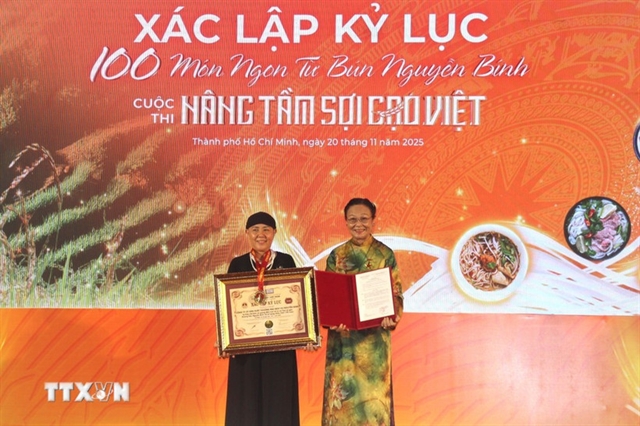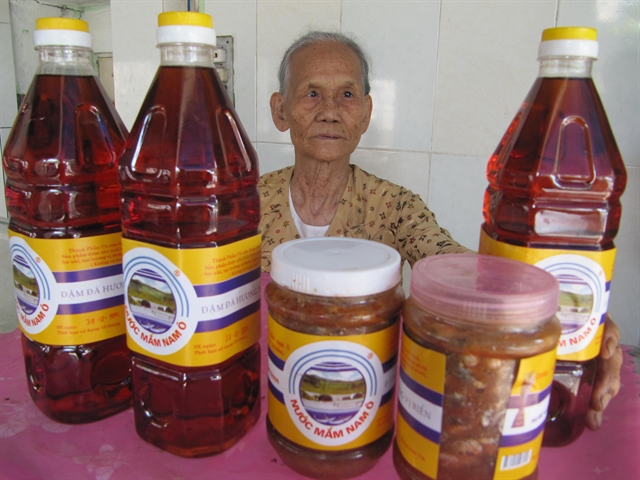 Life & Style
Life & Style

Two traditional trades – fish sauce from Nam Ô Village in Đà Nẵng and Thanh Hà pottery from Hội An – have been recognised as National Intangible Heritages by the Ministry of Culture, Sports and Tourism, contributing more cultural value to the two tourism hubs in central Việt Nam.

|
| An old woman introduces traditional fish sauce product of Nam Ô village in Đà Nẵng city. The trade has been recognised as a National intangible heritage. — VNS Photos Công Thành |
ĐÀ NẴNG — Two traditional trades – fish sauce from Nam Ô Village in Đà Nẵng and Thanh Hà pottery from Hội An – have been recognised as National Intangible Heritages by the Ministry of Culture, Sports and Tourism, contributing more cultural value to the two tourism hubs in central Việt Nam.
Director of Đà Nẵng city’s museum, Huỳnh Đình Quốc Thiện, confirmed the recognition to Việt Nam News, saying the certificates will be presented to the city later this year.

|
| A corner of Nam Ô Village in Đà Nẵng. The village produced 125,000 litres of fish sauce in 2018. |
Thiện said the nomination would help preserve the trade of Nam Ô in the suburban area of Đà Nẵng, which has existed for more than four centuries.
He said local residents still earn an income from fishing and fish sauce despite rapid urbanisation.
Situated at the foot of the Hải Vân Pass, 17km northwest of downtown Đà Nẵng city, Nam Ô village has produced fish sauce since the 19th century, and the trade still earns villagers their livelihoods.

|
| Rocks on the beach of Nam Ô village. The site has been developed as an eco-tour site with traditional fish sauce. |
Trần Ngọc Vinh, 71, chairman of the Nam Ô Fish Sauce Trade Association, said more than 110 households in the village produce fish sauce using traditional techniques and materials – anchovies and salt – with harvest season between March and July.
He said anchovies are fermented with salt in terracotta or jackfruit-wood jars for 12 months.
The village used 200 tonnes of anchovies to produce 125,000 litres of fish sauce last year.
The 500-year-old pottery trade in Thanh Hà Village, on the outskirts of Hội An, was also named as a national intangible heritage.

|
| A girl carves a clay pot at Thanh Hà Pottery village in Hội An. The trade was recognised as a national intangible heritage. |
The trade emerged in the ancient town in the late 15th century, and some villagers still make items using brick kilns.
The pottery craft was one of the oldest trades that still remains in the UNESCO-recognised world heritage site Hội An.
The trade is introduced as a craft experience for tourists rather than for mass production as in previous decades.

|
| A potter forms a clay jar at Thanh Hà pottery workshop in Hội An. The craft is included in tours of the ancient city. |
Pottery products from Thanh Hà were major commodities exchanged with businessmen from Japan, China and Europe in the 17th century.
The village – a popular destination on Hội An’s tourism map – hosts around 100 tourists each day.

|
| A brick kiln in Thanh Hà village in Hội An. |
An exhibition centre – the Thanh Hà Terracotta Park – was built to introduce the old trade and pottery experience to tourists. — VNS




